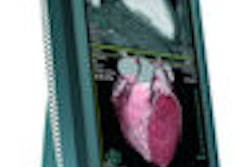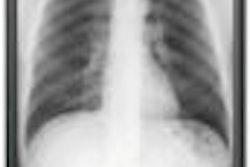PACS has revolutionized the way radiologists work, making workflow more efficient and, therefore, allowing them to read more studies faster. In fact, the productivity of the average radiologist in the U.S. has grown 70% over the past 15 years, as the adoption of PACS drives improvements in radiologist efficiency, according to a recent study in Radiology.
But there are more benefits to be had from PACS, according to Joseph Serio, executive director of Radiology of Huntsville (ROH) in Huntsville, AL. Radiology practices can use the technology not only to increase productivity, but also to improve their revenue. He offered tips from ROH's own experience with PACS to attendees at this month's Radiology Business Management Association (RBMA) meeting in Orlando, FL.
PACS and productivity
Reimbursement is declining as healthcare costs rise, imaging use increases, and the burden on public and private sectors from uninsured or underinsured people increases, Serio said. And if reimbursement continues to decline, the one factor that remains to maintain practice revenue is volume.
"The basic economics equation of radiology is practice revenues equal reimbursement times volumes," Serio said. "And the easiest way for a radiologist to read more studies each day is through the use of a PACS."
Increasing volume requires mitigating factors that can affect a radiologist's productivity, such as interruptions from other staff members, technologist inefficiency, lack of a patient's prior exam or report, lack of a reason for the exam or patient history, and dealing with voice recognition technology.
PACS is a key part of making a radiology practice competitive, not only because of the increased productivity it delivers, but also because radiology may be fast approaching commodity status -- and the only way to disrupt that trajectory is for a practice to differentiate its service from its competitors, Serio said.
Serio suggested a few ways that practices can set themselves apart from their competition. Practices can offer:
- Unique services, such as breast MRI, in-house call, and interventional radiology services
- Timely services and reporting
- Higher quality of services such as subspecialty reads
- Services in addition to interpretations, such as PACS, transcription, archiving, electronic medical record (EMR), or billing
PACS as revenue generator: ROH's experience
Radiology practices have a wealth of options that can make their PACS work harder and bring in more revenue, according to Serio:
- Consider acquiring new customers, such as hospitals, outpatient centers, or physician clinics that currently offer imaging in-house.
- Consider acquiring new sites to expand PACS and archive services for a "Community PACS" program.
- Work with the practice's IT company to cross-promote IT or radiology services.
Radiology of Huntsville invested in a PACS for three concrete reasons, Serio said. The first was that a nearby hospital with more than 100 beds needed a reliable remote radiology reading service to provide daily coverage for the 50,000 visits per year it handled, half of which were to the emergency room.
Second, ROH itself needed a way to read exams that allowed multiple radiologists at multiple sites to interpret studies. And third, PACS would help ROH better manage its images (no lost films) and provide quicker study turnaround.
But before the practice invested in PACS, it considered a number of issues, including potential reading revenue, how much it would cost to install and maintain the PACS network, how much IT expertise the PACS network would require, which PACS and voice recognition vendors would fit the practice best, and whether to buy or lease the equipment.
The investigation paid off, according to Serio.
"Today, our reading volumes with the help of PACS are 425 per day on weekdays and 125 per day on weekends," he said.
ROH's PACS cost per month is $65,000 total:
- Equipment lease: $14,000
- Communication network: $12,000
- IT support: $30,000
- PACS license fee: $9,000
ROH's PACS income per month is $215,000 total:
- Professional fees: $195,000
- Transcription fees: $20,000
What is ROH doing now? It has proposals out to add more reading sites and PACS customers. It continues to set up more referring physicians to allow review of images and reports via the Web. And its IT company is developing applications to make the PACS more efficient for the radiologists, Serio said.
By Kate Madden Yee
AuntMinnie.com staff writer
June 22, 2009
Related Reading
PACS drives 70% growth in radiologist productivity, study finds, June 18, 2009
RBMA speaker offers keys to managing conflict in radiology groups, June 9, 2009
The Profit Center: Part 3 -- Crafting effective employment contracts, April 24, 2009
The Profit Center: Part 2 -- Steering clear of Stark and false-claims violations, March 31, 2009
The Profit Center: Part 1 -- 7 key steps to contract success, March 12, 2009
Copyright © 2009 AuntMinnie.com




















